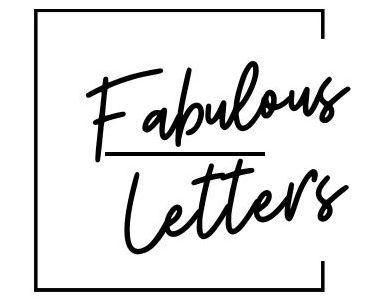
Forgiveness is a powerful act that can bring peace to your soul and mend broken relationships. When hurt runs deep, finding the right words to express your feelings can be daunting. That’s where writing a forgiveness letter comes in—it’s a thoughtful and structured way to let go of pain, share your truth, and begin to heal.
Whether you’re addressing an old friend, a family member, or even yourself, learning how to write a forgiveness letter can transform lingering resentment into hope and understanding. In this guide, we’ll walk you through every step, so you can create a letter that truly heals old wounds.
How to Write a Forgiveness Letter – Step-by-Step
#1. Get Your Mind and Heart Ready
Before you even start writing, take a moment to reflect. Forgiveness isn’t about excusing the other person’s actions—it’s about freeing yourself from the burden of anger and resentment. Take time to calm your mind, and allow yourself to feel whatever emotions arise. You may want to journal or meditate first to get clear on your thoughts. When you’re ready, you’ll have a clearer perspective on what you need to say and why it matters.
#2. Begin with a Warm Greeting
Starting your letter with a warm, respectful greeting sets the tone for reconciliation. Avoid diving into the past hurt right away. Instead, use a simple, friendly salutation, like “Dear [Name],” or “Hello [Name].” This approach signals that you’re opening the door to a positive conversation and are willing to engage from a place of healing, not blame.
#3. Set the Scene Without Blame
Now, you’re ready to introduce the reason for your letter, but tread carefully. The goal is to express your feelings, not place blame. Instead of saying, “You did this to me,” try framing your words in a way that focuses on your own experience. For example, “There’s something I’ve been carrying for a while, and I feel it’s time to share it.” This allows the other person to listen without feeling immediately defensive.
#4. Share the Emotions You’ve Been Carrying
This is where you get honest about the pain you’ve been holding onto. Be specific about the feelings you’ve experienced—hurt, anger, disappointment, or sadness. Sharing these emotions can be cathartic, as it lets you voice what you’ve kept inside for so long. Remember, this is your space to be vulnerable, so be truthful and open without fearing judgment. The act of sharing your emotions can be the first step in letting go.
#5. Declare Your Forgiveness
Now it’s time to speak the words that can transform everything. Declaring your forgiveness doesn’t mean forgetting what happened—it means choosing to release the grip of the past. You might say something like, “I’ve decided to forgive you for what happened.” This declaration serves as a powerful statement of personal growth and emotional freedom. It allows you to take back control of your peace and move forward.
#6. Explain Why Forgiveness Matters to You
Take a moment to explain why forgiveness is important for you. This isn’t about making excuses for the other person’s actions, but about sharing how holding onto the pain has affected your own well-being. For example, you might say, “I’ve realized that holding onto this anger has been weighing me down, and I need to release it in order to heal.” When you express how forgiveness frees you, it emphasizes that your decision to forgive is not just for their sake, but for your peace of mind and emotional health.
#7. Acknowledge Their Imperfections
In any relationship, both people bring their strengths and flaws to the table. Acknowledging the other person’s imperfections shows empathy and understanding. You could write something like, “I know you’re not perfect, just like I’m not, and we’ve both made mistakes.” Recognizing their humanity helps to break down the walls of resentment and opens the door for healing. It’s not about excusing bad behavior, but about recognizing that growth and change are possible for both of you.
#8. Look Ahead with Hope
Now, shift your focus to the future. A forgiveness letter isn’t just about addressing the past; it’s about moving forward. You might express your hope for better times ahead, like, “I hope we can find a way to rebuild our relationship from here,” or “I believe there’s a chance for us to grow stronger from this.” This forward-thinking attitude helps to create a sense of possibility and optimism, showing that forgiveness isn’t an end—it’s a new beginning.
#9. End with Kindness and Understanding
As you close the letter, do so with a sense of compassion and kindness. This isn’t the place for anger or bitterness. Instead, offer your understanding, like, “I know healing takes time, and I’m open to the process.” By ending with kindness, you reinforce your decision to forgive and leave the door open for ongoing healing and reconciliation. Your tone should be gentle, offering a sense of closure and peace.
#10. Wrap It Up with Your Signature
The final step is to sign your letter. Depending on the relationship and the tone you’ve set, you can either sign your full name or use a more personal salutation, such as “With warmth,” or “Sincerely.” Your signature represents a formal closure to the letter, but also symbolizes the emotional closure you’ve sought. This final act seals your words with intention and demonstrates that you are ready to release the past and embrace the future.
Closing Thoughts
Writing a forgiveness letter is an empowering step toward healing old wounds. By expressing your feelings, declaring forgiveness, and looking forward with hope, you create space for emotional freedom. Remember, forgiveness isn’t a one-time event—it’s a process that requires patience and understanding.
Whether or not the recipient responds, your decision to forgive will lighten your heart and help you move forward. So, take a deep breath, gather your thoughts, and start writing. You’re not just letting go of the past; you’re embracing a future filled with peace and growth.
